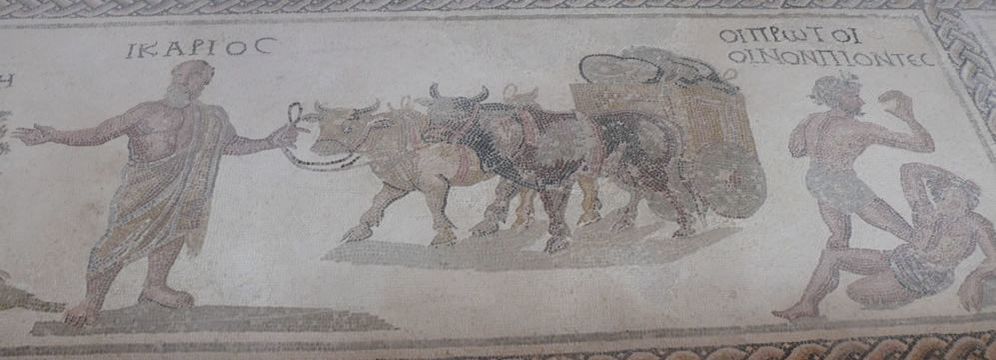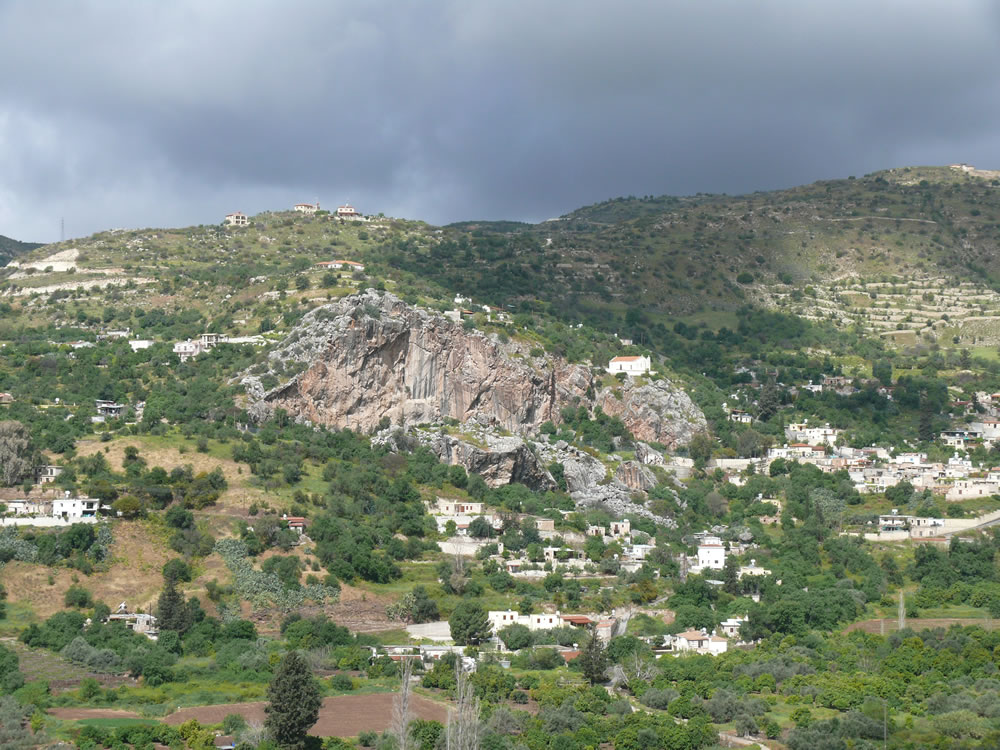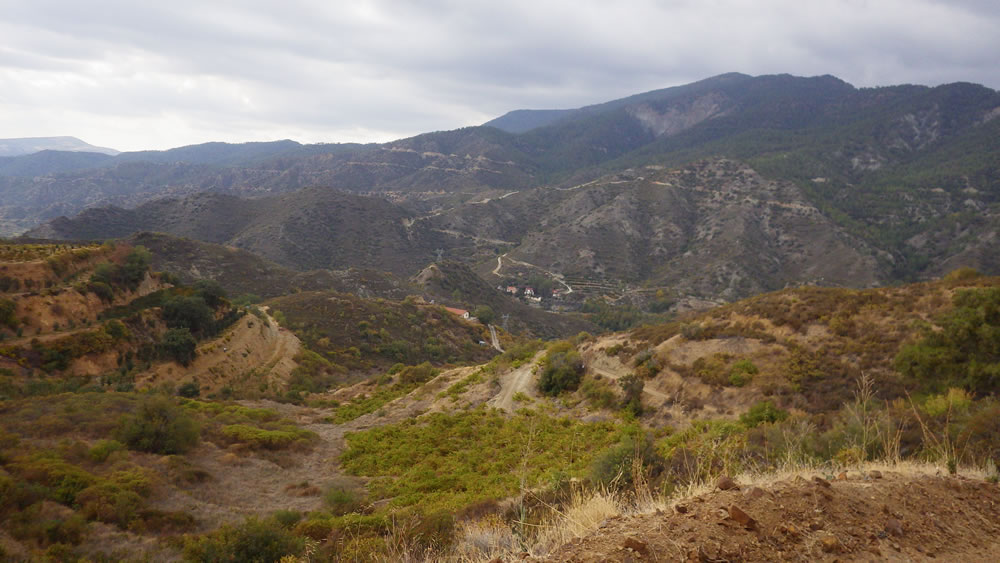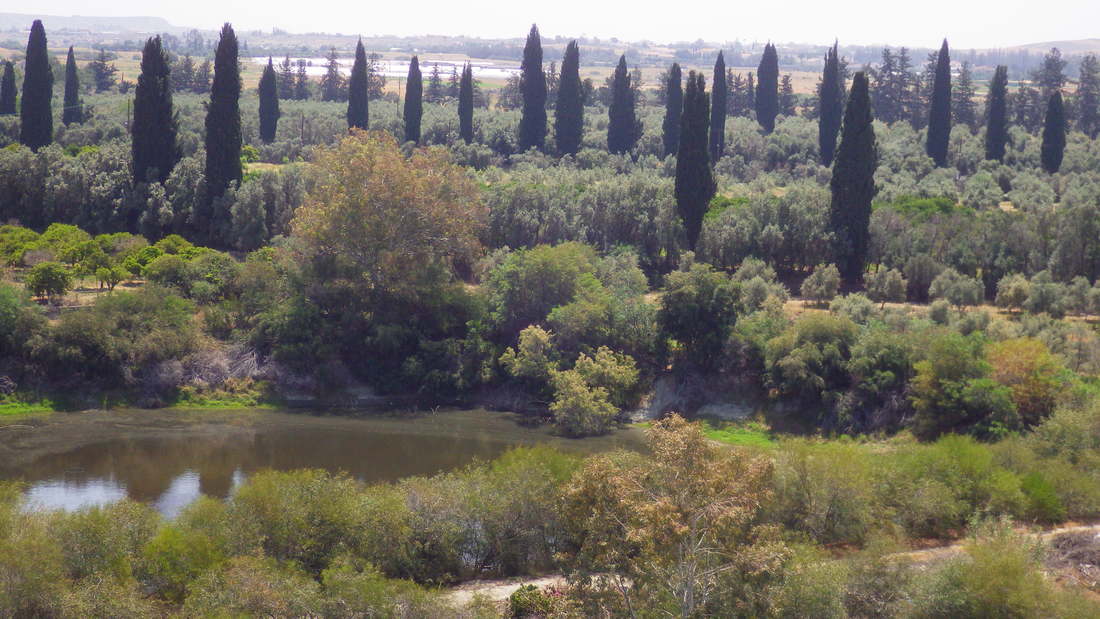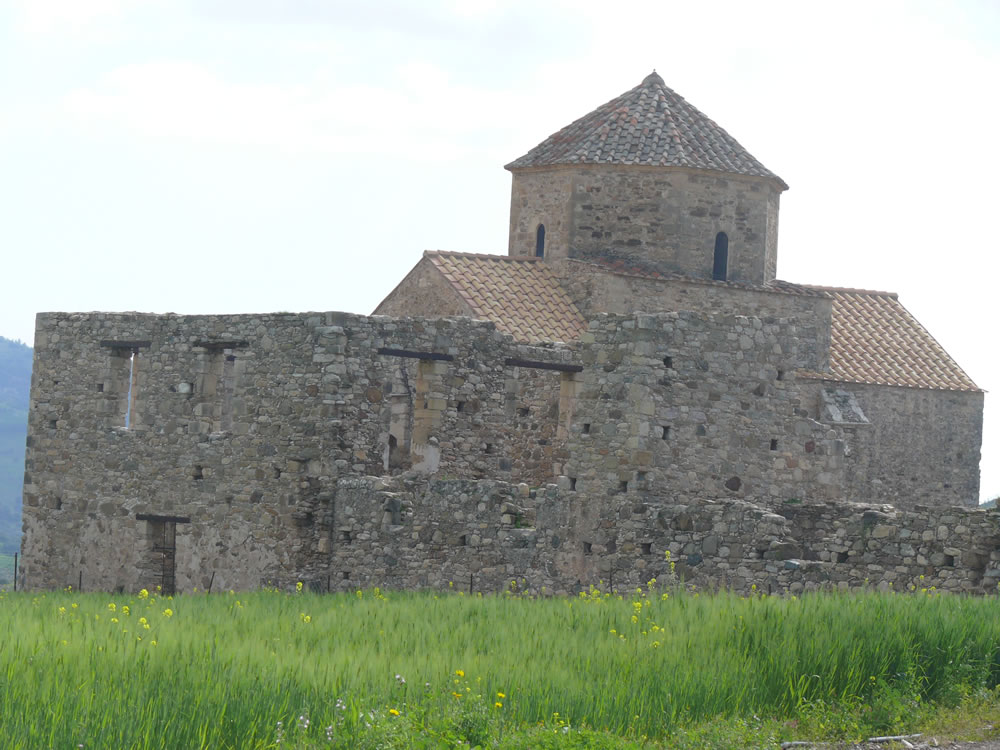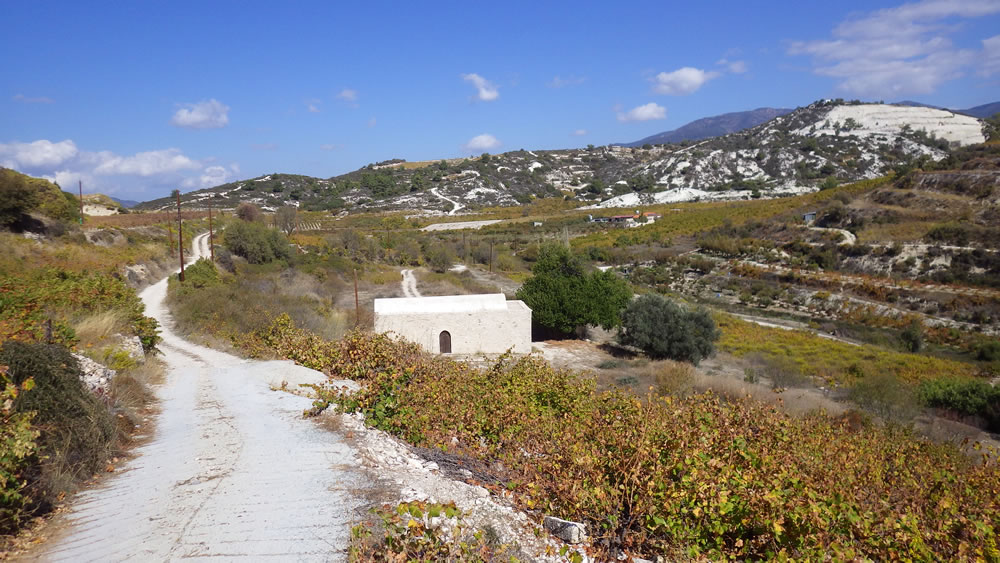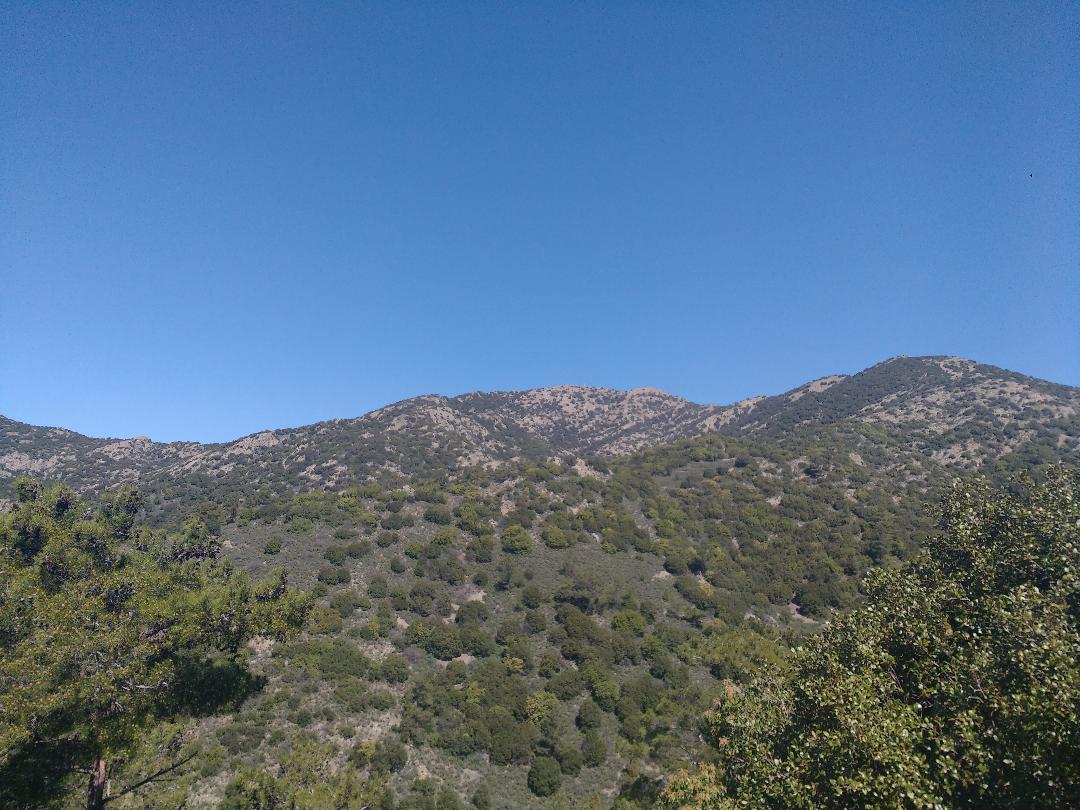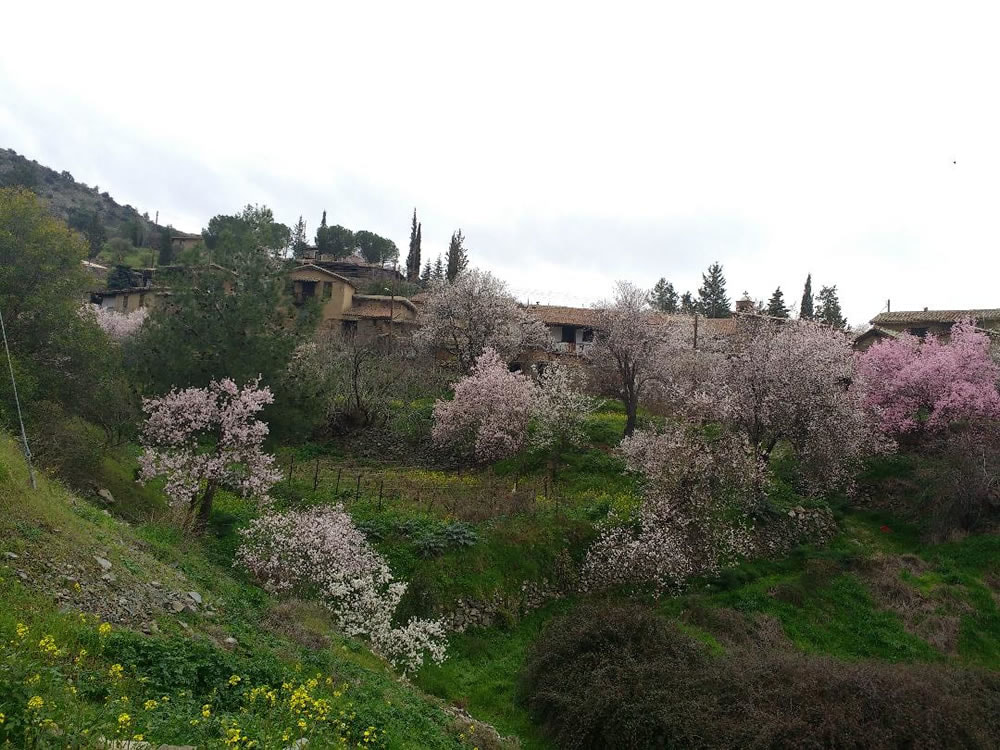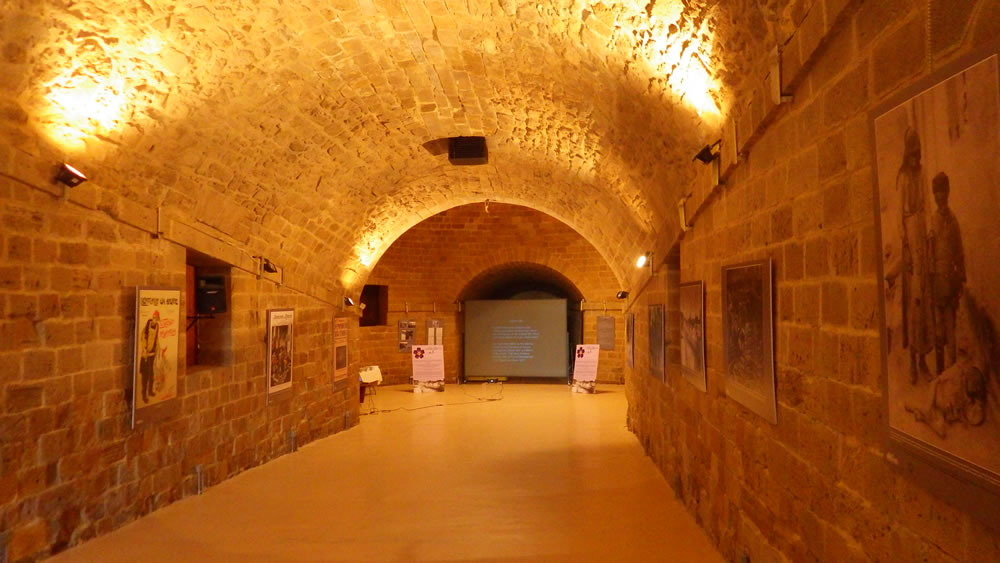The Pilgrimage Walk
The Pilgrimage Walk is based on the pilgrimage that people went on from many parts of Cyprus to the monastery of Apostle Antreas in Karpasia.
The modern version of the Pilgrimage Walk that we designed constitutes a 360-km long, multi-day exploration on foot across much of the island, celebrating Cyprus natural beauty and variety, its rich history and multiculturalism.
Natural Beauty and variety
The Pilgrimage Walk takes participants through some of the most beautiful scenery on the island : sparsely inhabited valleys like Ezousa Valley, Xeros Potamos Valley (with the possibility of vulture spotting), Diarizos Valley, vineyards, forests, rock formations and rugged peaks on the two mountain ranges of Troodos and Pentadactylos. On Pentadactylos the walk is largely along the ridge offering breathtaking views. The last stretch of the walk is in Karpasia peninsula with lush patches, feral donkeys and secluded beaches. At this time it is the west half that we support, as we consider the relevant infrastructure in this part as adequately developed for a a smooth, comfortable walking trip.
The modern version of the Pilgrimage Walk that we designed constitutes a 360-km long, multi-day exploration on foot across much of the island, celebrating Cyprus natural beauty and variety, its rich history and multiculturalism.
Natural Beauty and variety
The Pilgrimage Walk takes participants through some of the most beautiful scenery on the island : sparsely inhabited valleys like Ezousa Valley, Xeros Potamos Valley (with the possibility of vulture spotting), Diarizos Valley, vineyards, forests, rock formations and rugged peaks on the two mountain ranges of Troodos and Pentadactylos. On Pentadactylos the walk is largely along the ridge offering breathtaking views. The last stretch of the walk is in Karpasia peninsula with lush patches, feral donkeys and secluded beaches. At this time it is the west half that we support, as we consider the relevant infrastructure in this part as adequately developed for a a smooth, comfortable walking trip.
Rich Cultural heritage
The walk starts at Unesco World Heritage 'Nea Paphos' (during ancient times Paphos was considered to be the birthplace of Aphrodite, the Greek Goddess of love and beauty). Paphos is also the place where Saul of Tarsus got his Roman name of 'Paulus'. Other major cultural attractions on the itinerary include :
1) Panagia tou Sinti monastery in Xeros Potamos Valley (its repair in the 90s received the Europa Nostra award),
2) Two of the ten Unesco World Heritage Troodos painted churches (in Pelendri village and in Palaichori village),
3) Picturesque villages (Episkopi Morou Nerou, Trachypedoula or Salamiou, Arsos, Omodos, Palaichori, Fikardou, Pera Orinis, Kalyvakia/Kalavac)
4) Watermills
5) Medieval bridges either on the route or very near
6) A number of monasteries/chapels (eg Agios Iraklidios, Holly Cross in Omodos, Panagia Chrysospiliotissa, Apostle Philippos)
7) Divided Walled Nicosia
8) Gothic BellaPais Abbey
9) The castles of Voufavento and Kantara on Pentadactylos mountains (battle fields during Richard the Lionheart's conquest of Cyprus)
10) Antiphonitis monastery
11) Panagia Kanakaria monastery
12) Tomb chambers
13) Apostle Antreas monastery in Karpasia
The table below and the rest of the description regards the west half of the route, which is currently supported
Day of Trip |
Distance in km |
Total ascent (m) |
Total descent (m) |
Average elevation (m) |
Day 1 - Paphos Mosaics - Episkopi Morou Nerou |
19 |
300 |
150 |
150 |
Day 2 - Episkopi Morou Nerou via Panagia tou Sinti to Trachypedoula (or to Salamiou) |
25 |
950 |
600 |
300 |
Day 3 - Trachypedoula (or Salamiou) to Arsos |
14 |
800 |
500 |
500 |
Day 4 - Arsos to Pano Platres |
19 |
950 |
600 |
900 |
Day 5 - Pano Platres to Potamitissa |
18 |
600 |
900 |
900 |
Day 6 - Potamitissa to Palaichori |
19 |
1,150 |
1,100 |
1,050 |
Day 7 - Palaichori - Gourri |
15 |
750 |
950 |
750 |
Day 8 - Gourri via Fikardou to Pera Orinis |
20 |
650 |
1,000 |
600 |
Day 9 - Pera Orinis to Walled Nicosia |
24 |
100 |
350 |
250 |
The itinerary (summary)
Day 0 - Arrival to Paphos
Day 1 - Nea Paphos to Episkopi Morou Nerou village
Day 2 - Episkopi Morou Nerou via Panagia tou Sinti monastery to Trachypedoula (or Salamiou) village
Day 3 -Trachypedoula (or Salamiou) through Diarizos valley to Arsos village.
Day 4 -Arsos via Omodos village to Pano Platres village
Day 5 - Pano Platres via Pelendri village to Potamitissa village
Day 6 - Potamitissa to Palaichori village
Day 7 - Palaichori to Gourri village
Day 8 - Gourri via Fikardou village to Pera Orinis village
Day 9 - Pera Orinis via Chrysospiliotissa church to Walled Nicosia
Day 10 - Finish (of the west half of the Pilgrimage Walk) at Walled Nicosia
Day 0 - Arrival to Paphos
Day 1 - Nea Paphos to Episkopi Morou Nerou village
Day 2 - Episkopi Morou Nerou via Panagia tou Sinti monastery to Trachypedoula (or Salamiou) village
Day 3 -Trachypedoula (or Salamiou) through Diarizos valley to Arsos village.
Day 4 -Arsos via Omodos village to Pano Platres village
Day 5 - Pano Platres via Pelendri village to Potamitissa village
Day 6 - Potamitissa to Palaichori village
Day 7 - Palaichori to Gourri village
Day 8 - Gourri via Fikardou village to Pera Orinis village
Day 9 - Pera Orinis via Chrysospiliotissa church to Walled Nicosia
Day 10 - Finish (of the west half of the Pilgrimage Walk) at Walled Nicosia
Detailed Itinerary
On Day 0 from the airport travellers are transported to the center of the city of Paphos where they stay for the first night of the trip. Travellers are encouraged to explore Paphos Unesco World Heritage site (the mosaics are particularly stunning).
On Day 0 from the airport travellers are transported to the center of the city of Paphos where they stay for the first night of the trip. Travellers are encouraged to explore Paphos Unesco World Heritage site (the mosaics are particularly stunning).
|
On Day 2 walkers quickly leave Ezousa Valley and largely walk upstream in Xeros ('dry') River Valley. The itinerary passes by Panagia tou Sinti monastery, one of the major landmarks in the pretty uninhabited Xeros Potamos Valley as well as a number of watermills. As vultures live in the Valley, travellers may be lucky to spot some. Other important attractions in the Valley include abandoned Phinikas village (very close to Asprokremmos manmade lake, a few km downstream from the route) Roudias medieval bridge (nearly ten km upstream from the route, just where Xeros Potamos Valley meets Paphos Forest) and more watermills (one is triple arched) . The last stretch of the route is uphill and relatively hard.
On Day 4 the route takes walkers initially through prime vineyard land and then through a pine forest in the district of Limassol. It passes by the medieval Apostle Philip chapel (with its ancient laurel tree as belfry), close to wineries, through Omodos village with its historic monastery, Mandria village and finally ascends to Pano Platres village (a major tourist destination in Cyprus in the last century) on the way passing close to Milia medieval bridge.
Day 6 route is one of the most difficult and long on our itinerary. It is found largely through the forest (with stretches near orchards as well) offering views towards Limassol east coast. It passes through a number of villages (Kato Mylos, Agios Ioannis and Agios Theodoros, whose attractions include ancient trees and an old chapel) where travellers can have breaks. The route crosses over the mountains to the north side of Troodos, close to the imposing Papoutsa peak. It ends in rather large Palaichori village that has a good number of attractions including a Unesco World Heritage painted church.
On Day 8 the route passes through picture perfect small (uninhabited now) Fikardou village, a prime destination close to Nicosia. Further along it passes next to Agios Chrysostomos monastery, Tamassos manmade lake and the historic Agios Iraklidios monastery (and close to the archeological site of Tamassos). It ends at the stone-built center of Pera Orinis village, quite close to Mesaoria plain. |
On Day 1 the walk starts from the port where one finds Paphos fort and the entrance of the archaelogical complex. The route takes travellers past the coast (there is a trail next to organised beaches) upto Geroskipou beach. After that the route goes inland and follows a slightly uphill path through Ezousa Valley. On the way travellers pass by a couple of watermills, cultivated land and even water canals. The walk ends at stone-built Episkopi Morou Nerou village, characterised by an imposing rock, ruins of a medieval church as well as an Environmental Education center. On Day 3 initially travellers may have some time to explore the attractive villages of Trachypedoula or Salamiou (depending on where they walk to on the previous day). In Trachypedoula one can find a Geology Wall, a recent construction showing geological formations in Troodos and in Salamiou the medieval monastery of Salamiotissa. The walk traverses Diarizos Valley. It goes close to Hasamboulia rocks, a narrow passage used in the 19th century by the infamous Hasamboulia gang (the place is lately used for rock climbing) as well as close to Trozena village. There is a spot on the way near Trozena that every other year usually, for a few weeks in spring waterfalls (called Paradise Waterfalls) appear out of nowhere. A good part of the day's route takes place inside vineyard land. The trip ends at stone built medieval Arsos village.
The Day 5 route is primarily through the pine forest (with many strawberry trees as well). At many points walkers enjoy glorious views towards (the coast of) Limassol. The route passes on a medieval bridge near the village of Kato Amiandos and through the village of Pelendri (that has a Unesco World Heritage painted church). It finishes at the small village of Potamitissa. Day 7 sees one of the shortest and easiest routes in the Pilgrimage Walk, coming after one of the longer and most difficult days. It provides travellers with time to rest, relax and maybe explore some of the attractions of Palaichori village. Travellers are now exposed to views towards the north (the expansive Mesaoria plain as well as Pentadactylos mountains).The route finishes at Gourri village, with a pretty stone-built old center.
Day 9 sees the last walking day of the itinerary. The walk passes through a few villages and by rock carved Chrysospiliotissa chapel before joining the linear trail along Pedios river (the longest torrent in Cyprus) all the way to the Walled medieval city of Nicosia.
|
The west half of the Pilgrimage Walk ends in the medieval Walled city of Nicosia. Nicosia, the capital of Cyprus has many worthy attractions including an excellent archaeological museum, state of the art medieval military walls, converted medieval catholic churches (including the impressive gothic St. Sophia cathedral - now Selimiye mosque), a good number of 16th and 17th century Byzantine churches, medieval khans, Turkish baths and more. Exploration of the city is highly recommended.
To be continued ...
We hope to add the east stretch of the Pilgrimage Walk, finally reaching Apostle Antreas monastery soon.
Note:
On most days, the walking route passes through or near villages. In many cases there are possibilities for accommodation on many of the villages so the itinerary can be amended (extended to more days) as per traveller advanced request.
On most days, the walking route passes through or near villages. In many cases there are possibilities for accommodation on many of the villages so the itinerary can be amended (extended to more days) as per traveller advanced request.

